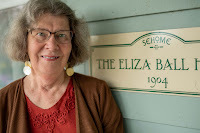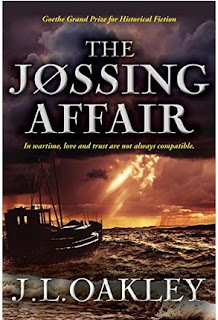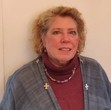Why I Write Historical Fiction -- A Guest Blogpost by Janet Oakley
Janet Oakley, writing as JL Oakley, writesaward-winning historical fiction that spans the mid-19th century to WW II. Hercharacters, who come from all walks of life, stand up for something in theirown time and place: the Pacific NW and WWII in Norway.
When not writing, she enjoys delving into localhistory, looking for little surprises that tell a larger story of the area andthe nation’s past, fodder far more novels or non-fiction pieces. She loves togarden, weave, and demonstrate 19th century folkways. She can churn some prettymean butter.

Why do I writehistorical fiction? It would be easy to say out of curiosity, but I know theseeds of my passion began with my mom introducing me to her favorite historicalnovels, The Prince of Paupers and Captain from Castile—all played by heartthrobTyrone Power in 1940s movies—and most importantly, family stories that reachback to the founding of my country. I was twelve when we took my 82 year-oldNana to Newburyport, MA to visit the 1670 tavern her direct ancestor had run inthe seventeenth century. Seeing that ancient building, visiting the villagegreen that celebrates the arrival of the ship that brought him in 1638, andseeing the grand home of his grandson built in 1702, left a deep impression onme. Here was the timeline of my family history that led down to the present,yet I wondered how my ancestors lived in those times.
My Nana’s ownstory of pioneering in the West in the late 19th century was a livingembodiment to me. I hung on her stories that she sent to me in letters and toldme in person. In elementary school, inspired by The Little House on the Prairie series, I began to write my ownhistorical stories. While pursuing a degree in American History years later, Iwas honored to be an intern and later, a volunteer in the Smithsonian’s AnthropologyArchives. One of my first assignments was to search early 19th century publications’depictions of Native Americans. I was successful, finding the oldest one fromthe 1820s (an authentic portrayal), but as I was searching, I found scandals(Swill’s Dairy in 1850s D.C.), first account of Yellowstone in the 1830s, andterrible poetry and jokes, which I collected. My exposure to these earlymagazines and newspapers such as FrankLeslie’s Illustrated News, increased my curiosity and made me ask, “Whydidn’t I know this?”
So why do Iwrite historical fiction? I believe it’s to tell untold or lost stories. Thoughlast year was the 90th anniversary of the Civilian Conservation Corps, FDR’swonderful program that saved millions of young men and their families and builtour state and national parks, few knew enough to celebrate the anniversary.Yet, the impact that program had on people during the Great Depression of the1930s continued on into World II. Without young men learning to work togetherin squads to accomplish difficult tasks, America would have been six months ormore behind getting our soldiers ready to fight. Tree Soldier, my novel about a young man struggling to redeemhimself in the CCC in the Pacific NW, shows how the program operated and how itaffected a local, mountain community. TimberRose is about women climbing mountains in skirts in the same locale in1907. More than half of the major mountain climbing clubs were made of women.They were part of the early environmental movement.
One of myfavorite untold stories are about Hawaiians in the Pacific NW, in particular onthe San Juan Island, working as shepherds and laborers for the Hudson Bay’sCompany during the 1850s and 1860s. Their contribution to the building of whatwould become Washington State should not be overlooked. Mist-chi-mas: A Novel of Captivity explores the dynamics ofHawaiians, called Kanakas, Coast Salish, English Royal Marines and the US Armywhen the island was under military occupation. The novel also explores society’spressure on what a woman could and could not do. “Mist-chi-mas” means captivein Chinook Wawa.
In the lastrecent years, my focus on untold stories has been on Norway in WWII. When Ifirst started to research my novel, The JøssingAffair, many years ago, I was surprised how often American magazines suchas Newsweek and Times reported on events happening in German-occupied Norway. Yet,all the WWII novels recently published seemed to be about the resistance andhorrible events on the continent or the Homefront in the UK. Who knew that up400,000 soldiers were deployed to Norway, a country of three million (Berlin’s population in 1940)? Thatthere were concentration camps in Norway and killing fields? How ordinarypeople resisted against Nazifying of their churches and schools? Thedestruction of Telavåg, “The Lidice of the North.” I was fascinated by the leader of the DeafChurch’s role in the Resistance and the hearty fishermen on the West Coast whosmuggled agents into the country and refugees out to Shetland. The psychopathicHenry Oliver Rinnan, a Norwegian who was Norway’s number two war criminal afterQuisling. All untold stories. I am happy to learn that people visiting Bergenare now taking the time to go out to the wonderful museum in Telavåg becausethey read about it my novels.
This is why Iwrite historical fiction.

Find out more about Janet an her books on her website: https://www.jloakleyauthor.com/



